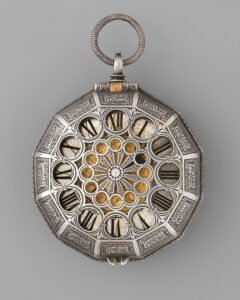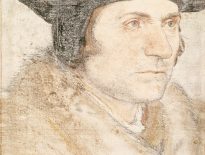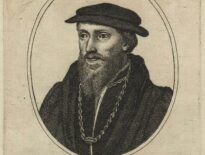On this day in Tudor history, 17th January 1587, Bartholomew Newsam died. He was buried in the church of St Mary-le-Strand, the parish in which he lived and worked. He was in his fifties at his death. His life spanned the reigns of five monarchs: Henry VIII, Edward VI, Lady Jane Grey, Mary I, and Elizabeth I—a time of immense change and innovation.
Newsam was more than just a craftsman—he was a trailblazer in English clockmaking, a skill that was incredibly specialised in Tudor times.
While most clocks were imported from Europe, Newsam stood out as one of the first English clockmakers to gain royal recognition.
Born around 1530, Newsam married Parnell Young in 1565, and the couple had at least fourteen children. Four of them survived him, and he left his clockmaker’s tools to his son, Edward, hoping he’d continue the family trade.
But Newsam’s work wasn’t ordinary. His clocks were works of art and engineering, combining beauty and precision. His biographer, Adrian Finch, notes that Newsam’s clocks were “equal to those of his foreign contemporaries”—which was a big deal at a time when English craftsmanship lagged behind Europe.
Newsam’s talents caught the attention of Queen Elizabeth I, who hired him to repair and possibly create clocks for the royal court.
But why was this so important?
In Tudor England, timekeeping wasn’t just about practicality. It was a symbol of power and status. A beautifully crafted clock was a statement piece, showing the world that you were wealthy, modern, and ahead of your time—quite literally.
For Elizabeth I, clocks would’ve been displayed in her palaces, privy chambers, and even gifted to foreign rulers as symbols of her monarchy’s strength and sophistication.
Examples of Newsam’s work can still be seen today in the British Museum and the Metropolitan Museum of Art. His clocks and sundials are a lasting legacy of Tudor innovation.




Leave a Reply